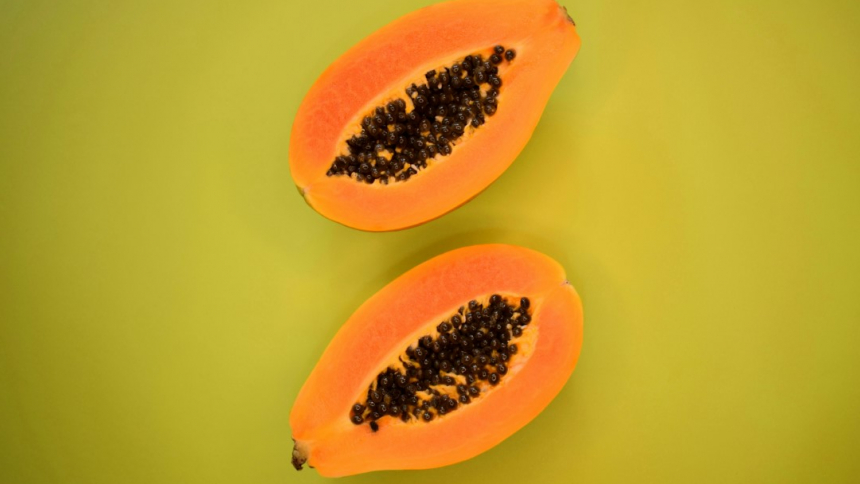
Papaya comes from the carica payaya tree, native to Central America but now flourishing in hot and humid corners of the globe. An elongated shape, with pinkish-red or bright orange flesh and black, round seeds, it is also known for its rather pungent aroma.
Pawpaw is not so straightforward. In the United States, it isn’t even related to the papaya. The fruit comes from the asimina triloba, a native North American tree, and boasts a custardy flesh and banana-mango flavour.
In Australia, though, things get a little complicated. Papaya or red papaya refers to the sweeter bright orange and red flesh varieties of the carica papaya. They are ripe when the skin is green/yellow.
Pawpaw is used to describe the milder, yellow-fleshed fruit of the same species. Also known as yellow pawpaw, it’s a bit rounder than it’s relative, with yellow/orange skin when ripe, and has a more subtle flavour.
So, here they are the same plant but called different names. You will also often see them spelled papaw without the first ‘w’. And they have nothing to do with the asimina triloba Americans call pawpaw. No wonder we’re confused.
How to get it
Rather than twist ourselves in knots about what to call it, let us just be grateful we grow this beautiful fruit in Western Australia. The state’s north, around Carnarvon and Kununurra, is the perfect place to grow papaya and/or pawpaw (see, we hate to pick a side).
As you would expect from a tropical fruit, they love the heat and humidity and flourish during the wet season, from November through to April. They are also quick growing and can start producing fruit in as little as six to 12 months.
If you want to grow one in your own backyard further south, it will be more of a challenge. With cooler temperatures and occasional frosts, it might be less painful to wait for them to make their way to the farmers markets or grocers late spring through to early autumn.
How to eat it
Papaya or pawpaw, there is no denying the tropical fruit’s allure. It works well in sweet dishes such as mousse, cakes and jams. And is equally at home in savoury dishes such as salads and seafood, even as a pizza topping.
Want to up your salsa game? Dice a ripe papaya, a cucumber, half a yellow capsicum and mix with a quarter cup each of chopped fresh coriander and mint and the juice of two limes. Serve with corn chips, steak, seafood… anything really.
A ripe red papaya or yellow pawpaw will give slightly when pressed and give off a floral scent. If it is green and still rock hard, just leave it for a few days to ripen on the bench. Or you could use it in the famous Thai green papaya salad (or mix sliced green papaya with freshly cooked prawns, lime, coriander and sliced chilli for a seafood dish with bite).
Before you try it any other way, though, you need to taste the sweet flesh unadorned. Cut it in half, scoop out the seeds – you can even pop the edible seeds into salad dressings for a peppery bite, if you like – and spoon the flesh straight into your mouth.
Who cares if you say papaya and he says pawpaw? Just eat it!